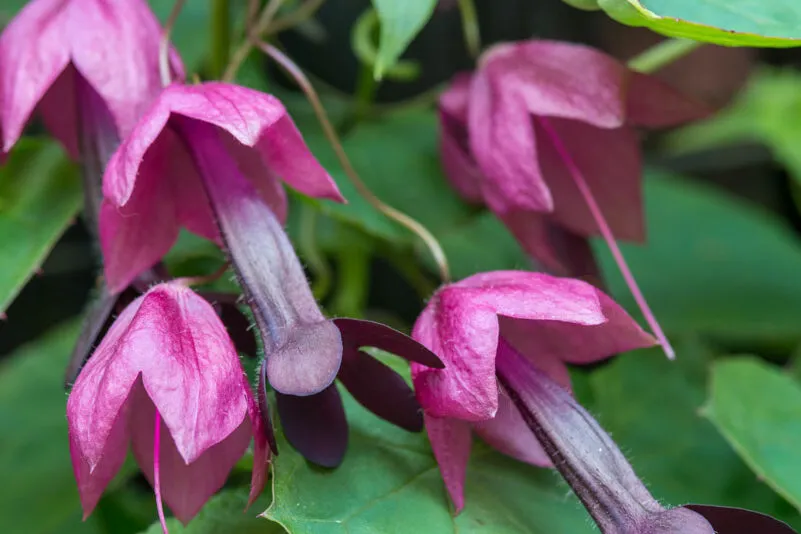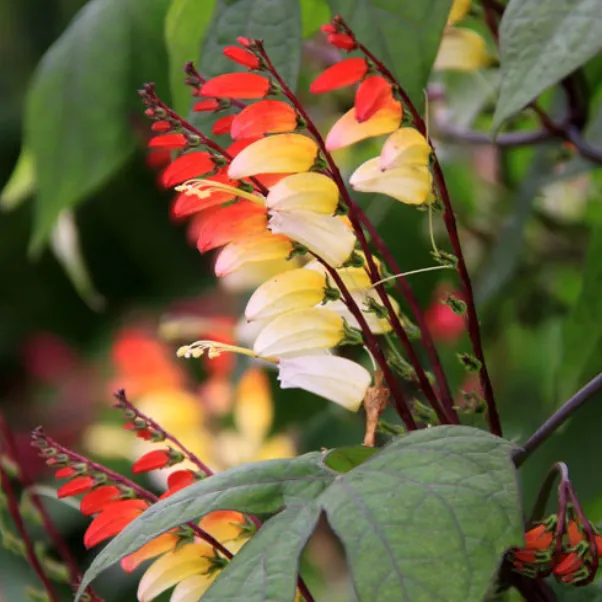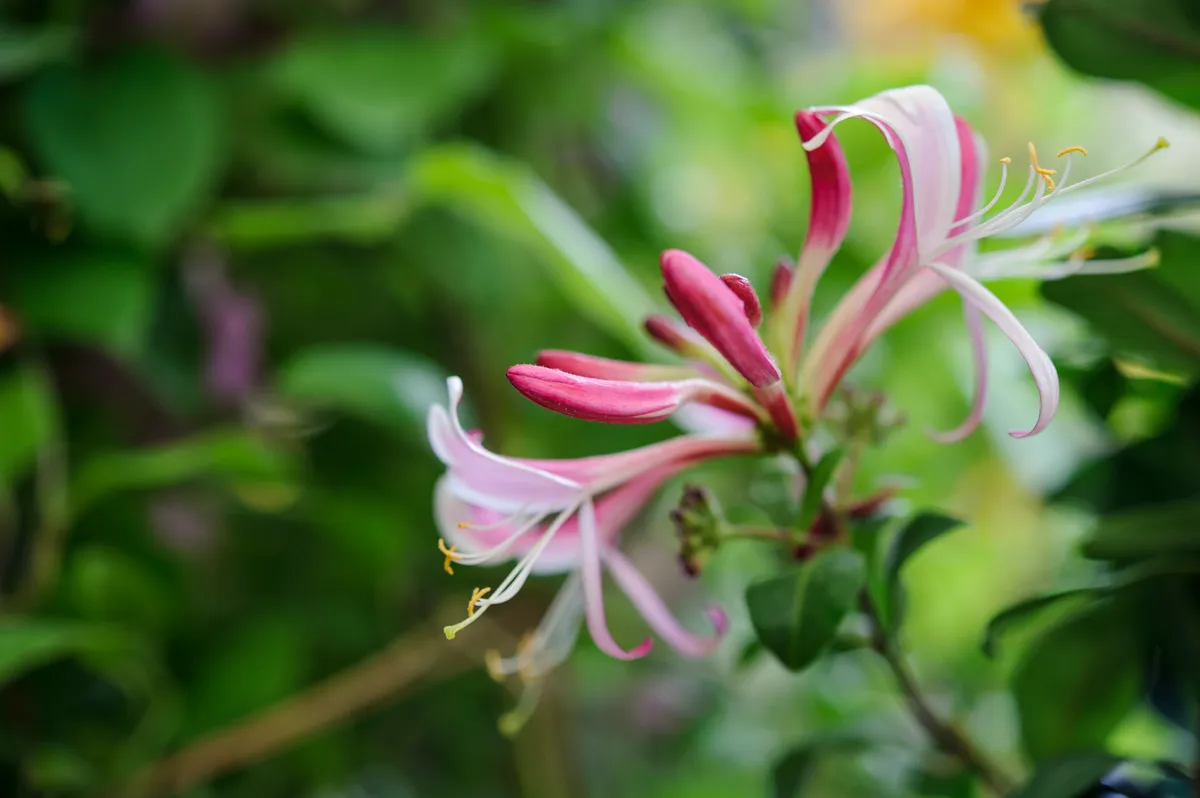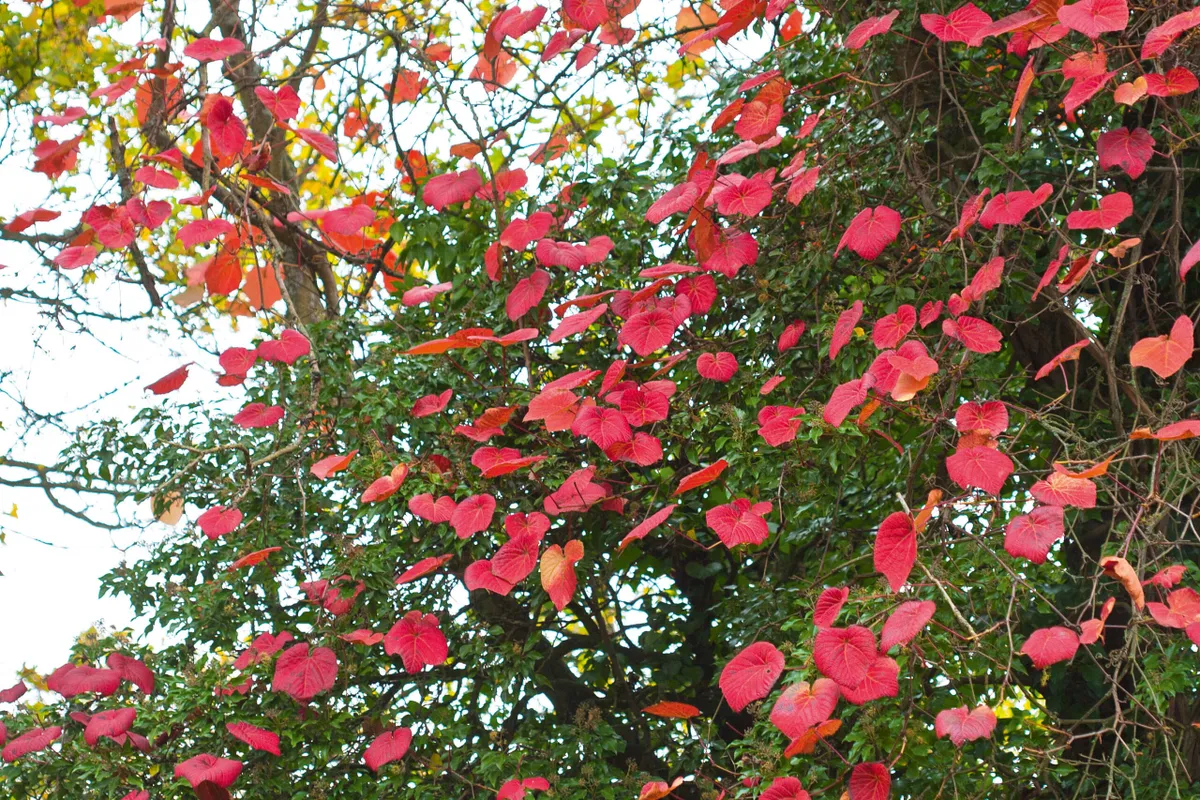Here we've rounded up a selection of the best climbing plants, perfect for your garden. We've divided the list into climbers for walls, borders and vigorous examples.
Climbing plants, including favourites such as honeysuckle and jasmine, all share the successful strategy of relying on the support of other plants or objects to reach the sunlight. This obviates the need to invest much in producing supportive tissue, such as the wood in trees, and means climbing plants aren’t subject to the usual restraints on growth.
Here are the best climbing plants
How to choose a climbing plant
A climbing plant can be a wonderful addition to your garden planting, and there are plenty more out there to choose from than just the regular honeysuckle or clematis or passion flower. The way to choose your climbing plant depends a lot on the space you have and what you want your plant to be used for. Here are some tips on how to choose the best climbing plant:
- What do you want it to grow up? If you're using your climbing plant as a screen, then you will want a vigorous climber that provides good, evergreen coverage, with hopefully flowering bonuses at some point too. If it's something you'll be looking out onto, make sure you pick a climber you love. They tend to dominate wherever they are.
- Do you have the right supports? A climber needs the right support, so make sure you invest in the correct plant support, or your wall, trellis or even tree is suitable for the particular climber.
- Do you have time to look after it? Lots of climbers are fussy and lots of climbers need work to prune it at the right point in the year. If you're looking for something that you can chop once a year and then leave to do it's own thing, consider a Clematis 'francis rivis' or Hedera algeriensis ‘Gloire de Marengo’.
Luxuriant growth brings its own problems – vigour must be matched carefully to the appropriate space, and abundance restrained where necessary. If you need some climbing supports, we have rounded up our favourites, and don't miss our guide to pruning climbing plants like wisteria.
The best climbing plants for your garden in 2024
Climbing plants with flowers
Rhodochiton atrosanguineus

This 'purple bell flower' produces beautiful flowers along the length of its twining stems, and looks effective growing along horizontal twigs or branches. This climbing plant can be sown late April, or August and overwintered frost free. 2.5m AGM. RHS H2.
Jasminum nudiflorum

This jasmine can be persuaded to adopt the semblance of a climber by training and cutting back immediately after flowering. If allowed some freedom, this winter jasmine will flower abundantly in winter and early spring. AGM. RHS H5, USDA 6a-9b.
Ipomoea tricolor ‘Heavenly Blue’

A climbing plant that's Perennial in a Mediterranean climate, it can achieve sufficient bulk here to make its presence felt from a late April sowing, without causing too much of a nuisance. Will flower until frost cuts it down. 3m. AGM. RHS H1c.
Ipomoea lobata

An intriguing member of the bindweed family, with flowers that are simultaneously an intense orange and yellow in the early bud stage, maturing to cream. Sow Spanish flag in late April and plant after all danger of frost. 3m.
Bomarea multiflora
Twining herbaceous climber, a relative of Alstroemeria, that arises from a tuber. The trailing lily may come through the winter protected by a thick mulch. Something this gorgeous deserves some effort. 6m. AGM. USDA 10a-11.
Lonicera x tellmanniana

A climbing honeysuckle lacking scent, but abundant, vivid-orange flowers offer excitement enough. Tolerates shade and may be pruned by removing flowered growth annually. 4.7m. AGM. RHS H5, USDA 7b-10b. Don't miss our plant profile for more honeysuckle suggestions.
Solanum laxum ‘Album’
A twining climber with abundant clusters of flowers that look fragile and fresh right up to the first frosts. Trim lateral branches to around 15cm in winter. On the tender side, so site carefully. 6m. AGM.
Evergreen climbing plants
Pileostegia viburnoides
Self-clinging, evergreen climbing plant thats shade tolerant with frothy white flowers in late summer. This climbing hydrangea has a slow rate of growth, but this makes it less work to restrain once established. 6m. USDA 8a-10b.
Climbing plants for shade
Clematis ‘Frances Rivis’
A good early flowering clematis with nodding flowers of great charm in spring. Works well in partial, deciduous shade as part of a woodland scheme. Prune lightly after flowering, if at all. AGM. RHS H6, USDA 4b-9a.
Lapageria rosea
Buy seeds from Plant World Seeds (£5.95)
Achingly beautiful climber, but requires shade, shelter, good drainage (yet plentiful summer moisture), is slow to establish and an apparently ambrosial beacon for slugs. 7m. AGM. RHS H3, USDA 9b-11.
Parthenocissus henryana
Native to China, this Virginia climbing plant has tastefully variegated leaves that turn vibrant shades of red in the autumn. It self-clings and will tolerate the shade of a north-facing wall. 4.7m. AGM. RHS H5, USDA 6a-9b.
Hydrangea anomala subsp. petiolaris
A climbing plant that's deciduous, but in season it completely clothes its space with large, green leaves and white, lace-cap inflorescences. Another climbing hydrangea that will cover a shady wall fast. 12m. AGM. RHS H5, USDA 4a-7b.
Schizophragma integrifolium
Similar to Hydrangea anomala, although you will need more patience. This climbing hyrdrangea is distinguished by the shape and size of the sterile florets that encircle the inflorescence. 6m. AGM. RHS H5, USDA 7a-10b.
Low maintenance climbing plants
Hedera algeriensis ‘Gloire de Marengo’
Good for lighting up dark walls without any fuss. A vigorous, self-clinging, adaptable variegated ivy climbing plant, with smart, glossy leaves tinged with white. AGM. RHS H5, USDA 7a-10b.
Ipomoea coccinea
Delicate in growth with striking scarlet flowers, this true annual is rarely seen and deserves to be grown more frequently. A climbing plant that's straightforward from seed sown in late April and then planted out after all risk of frost is over. 6m.
Clematis ‘Prince Charles’
A prolific blue-flowered clematis, similar to Sissinghurst’s ‘Perle d’Azur’ but with slightly smaller flowers and improved resistance to powdery mildew. Cut back hard in spring and watch it go. 2.4m. AGM. RHS H6, USDA 4a-8b. Here's our profile on clematis montana.
Cobaea scandens
The most vigorous of all annual climbers, and perennial in a frost-free climate. In one year, from seed, the 'cup and saucer vine' can cover an astonishing area with bell-shaped flowers from late summer to first frosts. 1.8m. AGM. RHS H2, USDA 9a-10b.
Fragrant climbing plants
Trachelospermum jasminoides

The scent of ‘false jasmine’ is not that similar to true jasmine, but equally powerful. The star jasmine is quite hardy, although the similar Trachelospermum asiaticum is said to be hardier. A climbing plant that's best on a sunny wall. 12m. AGM. RHS H4, USDA 8a-11.
Rosa ‘Paul’s Himalayan Musk’
Vigorous rambling rose, with delicate flowers. Perfect for hoisting up a large tree. Will take time to establish itself, but once it does you will be rewarded with grace, scent and a profusion of flowers. 9m. AGM. RHS H6, USDA 4a-9b.
Fast growing climbing plants
Clematis ‘Alba Luxurians’
One of the most vigorous of the viticella cultivars. Cut back hard every spring, you’ll be amazed at the coverage you get over the course of one season. This climber flowers profusely July to September. 3.6m. USDA 3a-9b.
Read our expert guide to pruning clematis.
Rosa ‘Wedding Day’
The scrambling rose flowers have the agreeable quality of changing colour as they mature, from pale primrose to almost white. The different stages appear side by side in each many-headed inflorescence. 9m. USDA 7a-9b.
Clematis ‘Bill MacKenzie’
Buy from J. Parkers (£7.99), Gardening Express (£17.99) and Sarah Raven (£26.95)
A tough, vigorous, climbing clematis, offering both striking flowers and seedheads over a long period. It’s tolerant of drought and extreme cold, but does best in full sun. 6m. AGM. RHS H6, USDA 5b-9b.
Lonicera periclymenum ‘Serotina’

Honeysuckle, with vivid colouring and a long flowering season. A vigorous and at times untidy grower; it can be kept within bounds by carefully removing flowered shoots in winter. 6m. AGM. RHS H5, USDA 5a-9b.
Rosa ‘Chevy Chase’
A climbing rose with a touch of opulence. The flowers are small double and crimson, with tightly clustered petals. Great in combination with the dark, glossy leaves of a mature holly, which makes a suitable host. 7m. USDA 5a-9b.
Rosa ‘The Garland’
Buy from Burford Garden Co. (£33.00)
Trained to cover an archway, this climbing rose has always been the most arresting sight in the garden where I’ve been working for the past four years. Now it’s happily rambling on to a neighbouring yew tree. 7m.
Wisteria floribunda ‘Alba’
Often grown in spur-pruned tiers on a wall, although if you allow it the freedom to romp into trees, this climbing plant will seek out the sunshine to flower well, and assume something of its natural character. 12m. USDA 5a-10b.
Vitis coignetiae

A vine in the more precise sense of the word: a close relative of the grape. This climber is grown for its large leaves, which turn spectacular colours in autumn. A wonderful way to enliven evergreen trees. 12m. AGM. RHS H5, USDA 5a-9b.
Clematis montana var. grandiflora
Well known for its extraordinary vigour, which makes it difficult to contain. This climbing plant's stemmy growth can look rather untidy, especially in the winter. All will be forgiven when it flowers. 12m. AGM. RHS H4, USDA 6a-9b.
Climbing plants are a great addition to any garden as they not only provide aesthetic appeal but also offer practical benefits such as shade and privacy.
With a wide range of varieties to choose from, gardeners have the opportunity to experiment with different climbers to suit their taste and requirements. Whether you have a small balcony or a large garden, there is a climbing plant that can transform your outdoor space.
By selecting the right type of climbing plant and providing the right conditions for it to grow, you can create a beautiful and functional garden that is a joy to be in. So why not take the leap and add a climbing plant to your garden today!
If you're in need of climbing supports for your climbing plants, we have rounded up the best climbing supports for 2024. Or here's our piece on how to make your own plant supports.